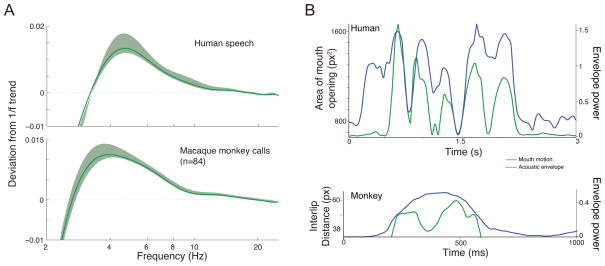Figure 2.
A. Speech and macaque monkey calls have similar rhythmic structure in their acoustic envelopes. Modulation spectra for human speech and long duration (>400 ms) macaque monkey calls. X-axes represent frequency in log Hz; y-axes depict power deviations from a 1/f trend. B. Mouth motion and auditory envelope for a single sentence produced by human (top panel). X–axis depicts time in seconds; y–axis on the left depict the area of the mouth opening in pixel squared; y-axis on the right depict the acoustic envelope in Hilbert units. Bottom panel shows mouth motion and the auditory envelope for a single coo vocalization produced by a macaque monkey. X–axis depicts time in milliseconds; y–axis on the left depict the distance between lips in pixels; y-axis on the right depict the acoustic envelope power in Hilbert units.

